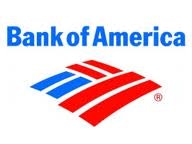The financial collapse of 2007, and the recession that followed in 2008, changed the way we looked at banks forever. Throughout the chaos we learned that banks are much more complex structures than we ever could have imagined which, to some degree, makes them riskier thank we’d ever hoped.
What followed the crash was a complete annihilation of banking stocks, and the industry has been slow to recover.
But some banking stocks have been avoided much more than others. Let’s take a look at the current banking landscape and see if we can separate the wheat from the chaff.
Banking on housing?
The current banking landscape is a fascinating one. After the crash of 2008 all banks traded like the plague, but now they’ve separated themselves a bit. The odd thing is that the separation of “acceptable bank stocks,” versus “risky ones,” doesn’t seem to be based on anything that the actual businesses are doing.
I’d argue that the “blind trust” of some banks could be leading investors into a trap, while also causing them to miss some values that are right under their nose.
Bank of America Corp (NYSE:BAC) fell hard during the crash due to housing woes. Since then some banks–like Wells Fargo & Co (NYSE:WFC) and U.S. Bancorp (NYSE:USB) –with much greater exposure to housing, have rebounded faster.

In some ways, investors are treating the banks much like a burn victim would treat a bonfire. Even though Bank of America Corp (NYSE:BAC)’s fundamentals make it look stronger than other banks, they’re hesitant to get too close to the flame.
Mortgage origination decline: the next game changer?
The mortgage outlook over the next six months should benefit Bank of America Corp (NYSE:BAC) over Wells and US Bank, as well. Over the past two years interest rates have done nothing but decline, which has led to a refinancing boom, and this has benefited Wells Fargo & Co (NYSE:WFC) and US Bank immensely. Any increase in rates, which we’re already seeing, will lower mortgage refinancing fee revenue, which could crimp earnings at both Wells Fargo and US Bank.
The housing trends, dare I say it, actually should benefit Bank of America Corp (NYSE:BAC) over the next year or so. When you step back and look at what really hurt Bank of America during the crash, it was their disastrous acquisition of Countrywide and the foreclosures that came with it. The trend we are seeing right now in housing is that rates are creeping up but, at the same time, the number of foreclosed homes in the U.S. is expected to decrease dramatically over the next year. A decrease in foreclosures should help BAC; and at the same time, the bank is not as dependent on mortgage origination revenue as its competitors.
Further, Bank of America Corp (NYSE:BAC) has some of the highest exposure to commercial banking (28% of revenues) and credit cards (20% of revenues) among the “mega-banks.” Commercial banking and credit cards have been the absolute best place to lend in recent years, with a very low percentage of non-performing loans. When you take a look at Bank of America’s fundamentals and its loan portfolio, it should trade at a rich (or even fair) valuation.
So why doesn’t it?
The trust factor
At the end of the day it comes back to trust, or a lack thereof. A lack of trust is why Bank of America Corp (NYSE:BAC) trades at a price to book ratio well below (0.71) its peers. It’s also the reason that the bank needed Warren Buffett to invest in it, as a sign of stability.
Bank of America reported quarterly earnings this week that showed net income growth of 63%; trust is the reason the stock is still stuck below $15 per share.
The truth is, many investors look at Bank of America Corp (NYSE:BAC)’s strong fundamentals and simply think “I’ve heard that before.” Before the collapse, all of the banks looked to have good valuations, good fundamentals, and (especially) good assets, until they didn’t. Since the collapse, all of the mistrusted “too big to fail” banks have made huge acquisitions and become larger and, to some extent, harder to value.
Wells Fargo & Co (NYSE:WFC) and US Bank never abused the public’s trust. These banks seem to be simpler to understand, and they pay higher dividends (just under 3%) than a BAC. Investors feel there is a safety, and a trust, factor, so these banks get the benefit of the doubt. Despite that safety, I would argue that Bank of America Corp (NYSE:BAC) has a better portfolio and more upside than any banking stock.
The key question for investors is, has Bank of America changed? Does it deserve investors’ trust?
Because if it has changed, it’s simply one of the best values available today.
Adem Tahiri has no position in any stocks mentioned. The Motley Fool recommends Bank of America and Wells Fargo. The Motley Fool owns shares of Bank of America and Wells Fargo.
The article Banking: When Do Fundamentals Outweigh Trust? originally appeared on Fool.com.
Copyright © 1995 – 2013 The Motley Fool, LLC. All rights reserved. The Motley Fool has a disclosure policy.


